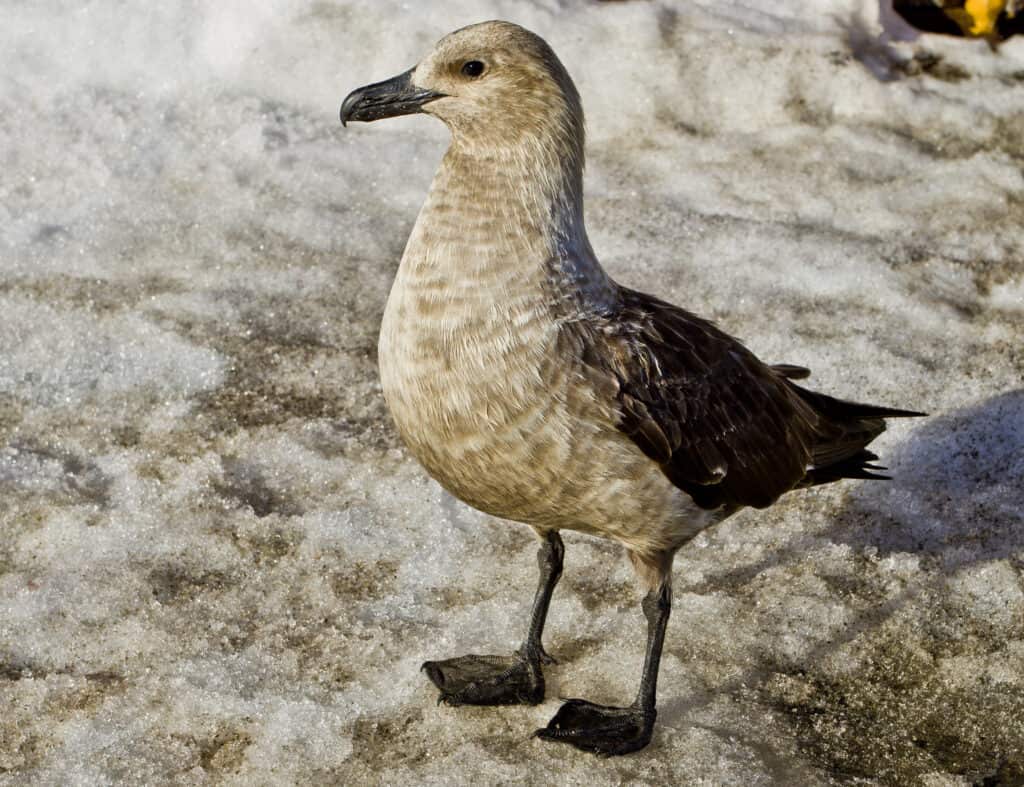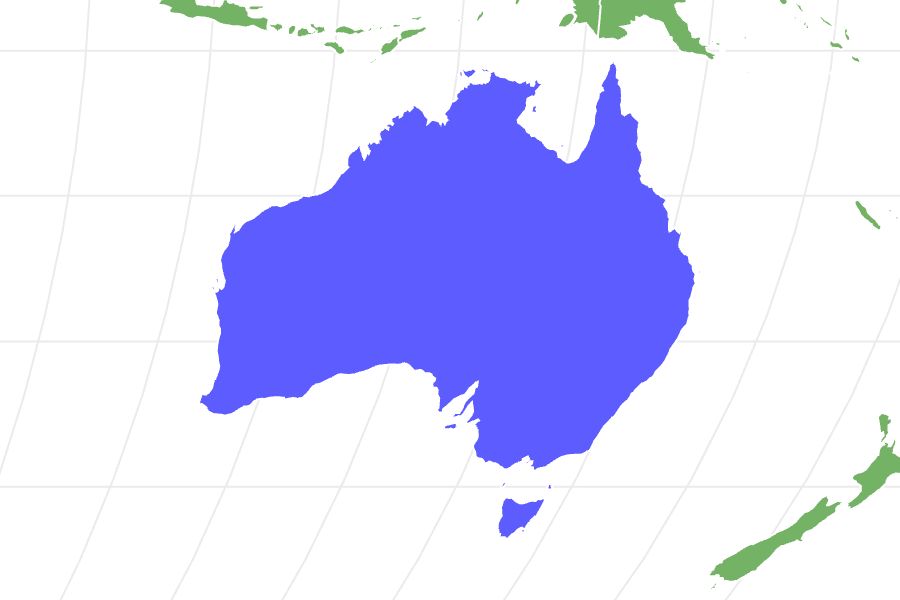Skua
Skuas will chase other birds until they give up their catch
Advertisement
Skua Scientific Classification
Read our Complete Guide to Classification of Animals.
Skua Conservation Status
Skua Facts
- Prey
- They eat fish, carrion, birds, eggs, chicks, and more.
- Main Prey
- Fish
- Name Of Young
- Hatchlings or chicks
- Group Behavior
- Mainly solitary
- Fun Fact
- Skuas will chase other birds until they give up their catch
- Estimated Population Size
- one million
- Biggest Threat
- Nest predation and competition for food
- Most Distinctive Feature
- Long, hooked bills
- Distinctive Feature
- Webbed feet
- Wingspan
- 48 inches
- Incubation Period
- 23 to 30 days
- Age Of Fledgling
- 24 to 55 days
- Habitat
- Coastlines, coastal moors
- Diet for this Fish
- Carnivore
- Lifestyle
- Diurnal
- Favorite Food
- Fish, eggs, and chicks
- Type
- Bird
- Common Name
- Skua
- Special Features
- Sharp claws
- Number Of Species
- 7
- Location
- the coastline of every continent
- Nesting Location
- On the ground in a treeless open area
- Migratory
- 1
The skuas feed by stealing other sea birds’ food.
The skua is a top avian predator with a reputation for being a bird bully. These birds are long-distance migrants who spend their winters in warmer waters before heading to the Arctic to breed. They live along the coastline of every continent and spend their days stealing food from birds’ mouths and nests and “dive-bombing” intruders. Learn all there is to know about this intimidating group of birds, including where you can find them, how they eat, and how they defend their nests.
5 Amazing Skua Facts
- Skuas are found on the sea coasts of all continents. They are long-distance migrants, and some species may even visit the South Pole.
- These birds are fierce predators, often labeled as bullies due to their tendency to steal.
- They attack intruders by “dive-bombing” and sinking their sharp claws into their heads.
- Skuas will chase other birds until they give up their catch or disgorge the food they’ve eaten.
- During the nesting season, skuas will prey on other sea birds’ nests.
Where to Find Skuas
Skuas live along sea coasts of every continent, some even reaching the South Pole. Four skua species (south polar, pomarine, parasitic, and long-tailed) breed on the Arctic coastline, then head to warmer waters, like the Southern Ocean, to spend winters. The brown skua typically stays in the Southern Ocean, while the great skua stays in the North to Northeast Atlantic. The Chilean skua breeds on the southern coast of Chile and Argentina and winters on the Pacific Coast of Peru and Chile. Look for them in the sky or coastal moors, scavenging for food.
Locations
These birds are found along the sea coasts of all continents.
Skua Nest
Both sexes help in building the nest, which is a circular pile of grasses and other plant material. They place it on the ground in a treeless open area with low vegetation, typically close to colonies of other sea birds.
Scientific Name
The skuas are a group of seven species that form the Stercorarius genus, the only genus in the Stercorariidae family. Many of the species are called jaegers in North American English. The word “skua” is North Germanic for the island of Skúvoy (Central Faroe Islands), which had a colony of great skua birds. And “jaeger” is German for “hunter.”
The skua genus contains seven species:
- Chilean skua
- South polar skua
- Brown skua
- Great skua
- Pomarine jaeger
- Parasitic jaeger
- Long-tailed jaeger
Size, Appearance, and Behavior
Skuas are medium to large birds, with an average length of 22 inches and a 48-inch wingspan. Their weight ranges from 0.68 pounds (long-tailed skua) to 3.6 pounds (brown skua). Most have long bills with hooked tips, webbed feet, sharp claws, and brown or gray coloring with white markings on their wings.
These birds have an aggressive nature and regularly attack intruders, steal food, and rob the nests of other birds. They are typically solitary outside the breeding season but may form small groups to prey on other birds’ nests. They are also solid and acrobatic fliers and have a variety of vocalizations. Skuas can reach up to 50 mph.

Most skuas have webbed feet and sharp claws. This is a South Polar skua.
©Sergey 402/Shutterstock.com
Migration Pattern and Timing
Skuas are long-distance migrants. But where they migrate depends on the species. The great skua spends summers in Iceland and Norway and winters at sea in the Atlantic Ocean, sometimes reaching North America. The brown skua breeds in the sub-Antarctic and Antarctic zones but moves further north outside the breeding season. Several species are trans-equatorial migrants, meaning they cross the other side of the equator.
Diet
Skuas are fierce predators that take what they want. Kleptoparasitism comprises 95% of their feeding methods during the winter.
What Does the Skua Eat?
Skuas are carnivores that eat fish, carrion, birds, eggs, chicks, and more. During breeding, they eat fish and carrion, which they take from other seabirds and gulls. They may occasionally kill and eat adult birds like gulls, puffins, and herons. During the breeding season, the northern species rely on small rodents, and the southern skuas primarily catch fish near their grounds. Most species eat eggs and chicks of other sea birds during the nesting period. These bird bullies will even go as far as stealing milk directly from an elephant seal’s teat. They will often chase other birds until they give up their catch, even forcing them to disgorge food they’ve eaten.
Predators, Threats, and Conservation Status
The IUCN lists all skua species as LC or “least concern.” Due to their extensive range and large population, they do not qualify for “threatened” status. However, some species, like the brown skua, have had a population decline in recent years. These birds are vulnerable to nest predation, kleptoparasitism (food theft), and competition for prey.
What Eats the Skua?
While skuas are one of the top avian predators in their environments, they can still be vulnerable to predation (especially their young). The skua’s top predator is the arctic fox, which likes to take their eggs and young from the nest. To defend their breeding grounds, they fiercely attack intruders by “dive-bombing” and going for their heads.
Reproduction, Young, and Molting
Breeding season varies by species. South Polar skuas breed from November to February, while long-tailed skuas begin in June. Most breed in coastal moors, tundra, or grassy islands and nest on the open ground. Females lay one to two eggs and incubate them anywhere from 23 to 30 days, depending on the skua. The females tend the nest alone, but males will bring her food. Fledglings leave the nest anywhere from 24 to 55 days after hatching. Skuas reach sexual maturity anywhere from two to eight years. They can live up to 35 years in the wild.
Population
The global skua population is well over one million mature individuals. All skua species have stable numbers, except for the brown skua, which has undergone a 47% decline in the last five years. None of the species are experiencing any extreme fluctuations or fragmentations.
Up Next:
View all 293 animals that start with SSkua FAQs (Frequently Asked Questions)
Do skuas eat penguins?
While they don’t typically eat adult penguins, skua are famous for stealing and eating penguin eggs and chicks.
How fast can a skua fly?
Skuas can fly up to 50 mph!
How big is a skua?
Skuas are medium to large birds, with an average length of 22 inches and a 48-inch wingspan. Their weight ranges from 0.68 pounds (long-tailed skua) to 3.6 pounds (brown skua).
Are skuas predators?
Skuas are fierce predators that take what they want. They will often chase other birds until they give up their catch, even forcing them to disgorge food they’ve eaten.
Where are skua found?
Skuas live along the coastlines of every continent. Four skua species (south polar, pomarine, parasitic, and long-tailed) breed on the Arctic coastline, then head to warmer waters, like the Southern Ocean, to spend winters
What do skuas eat?
Skuas eat fish, carrion, eggs, chicks, and even other birds.
How long do skua live?
Skua have long lifespans and can live up to 35 years old.
Thank you for reading! Have some feedback for us? Contact the AZ Animals editorial team.
Sources
- IUCN Red List / Accessed September 9, 2022
- Birds of Seabrook / Accessed September 9, 2022
- Wubr's the Wildlife / Accessed September 9, 2022


















